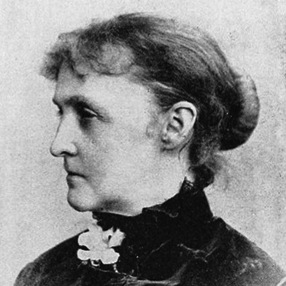The Palace-Burner
A picture in a newspaper
She has been burning palaces. “To see
The sparks look pretty in the wind?” Well, yes—
And something more. But women brave as she
Leave much for cowards, such as I, to guess.
But this is old, so old that everything
Is ashes here—the woman and the rest.
Two years are—oh! so long. Now you may bring
Some newer pictures. You like this one best?
You wish that you had lived in Paris then?
You would have loved to burn a palace, too?
But they had guns in France, and Christian men
Shot wicked little Communists like you.
You would have burned the palace?—Just because
You did not live in it yourself! Oh! why
Have I not taught you to respect the laws?
You would have burned the palace—would not I?
Would I? Go to your play. Would I, indeed?
I? Does the boy not know my soul to be
Languid and worldly, with a dainty need
For light and music? Yet he questions me.
Can he have seen my soul more near than I?
Ah! in the dusk and distance sweet she seems,
With lips to kiss away a baby’s cry,
Hands fit for flowers, and eyes for tears and dreams.
Can he have seen my soul? And could she wear
Such utter life upon a dying face:
Such unappealing, beautiful despair:
Such garments— soon to be a shroud—with grace?
Has she a charm so calm that it could breathe
In damp, low places till some frightened hour;
Then start, like a fair, subtle snake, and wreathe
A stinging poison with shadowy power?
Would I burn palaces? The child has seen
In this fierce creature of the Commune here,
So bright with bitterness and so serene,
A being finer than my soul, I fear.
This poem is in the public domain. Published in Poem-a-Day on September 3, 2023, by the Academy of American Poets.
“The Palace-Burner” appeared in The Independent, vol. 24, no. 1252 (November 28, 1872), and later again in A Voyage to the Fortunate Isles and Other Poems (James R. Osgood and Company, 1874). In Nineteenth-Century American Women Poets: An Anthology (Blackwell Publishers, 1998), Paula Bernat Bennett, a professor of English at Southern Illinois University, explains, “A striking illustration of the execution of a petroleuse—or ‘palace-burner,’ as the female members of the Paris Commune were called—appeared in Harper’s Weekly, July 8, 1871. The principal speaker here is a bourgeois mother, who is talking with her young son, probably about this illustration. The Paris Commune (March 18–May 28, 1871) was Europe’s first experiment in communism. Coming at the end of the Second Empire under Louis Napoleon [. . .], it was an insurrectionary government led by urban workers who, among other acts, burned down the Tuileries palace. Over 17,000 men, women, and children were executed by government forces following a three-month siege. The execution of the female communards, in particular, elicited outrage in the United States, and much pondering of women’s roles in such affairs.” Elsewhere in the anthology, Bennett refers to this poem as Piatt’s “signature poem,” claiming it to be born, as all of Piatt’s “greatest and most powerful poems” were, from the realization that “neither as Southern ‘belle’ nor Northern bourgeois matron could she escape the consequences of her white skin and class privilege [. . .].”

